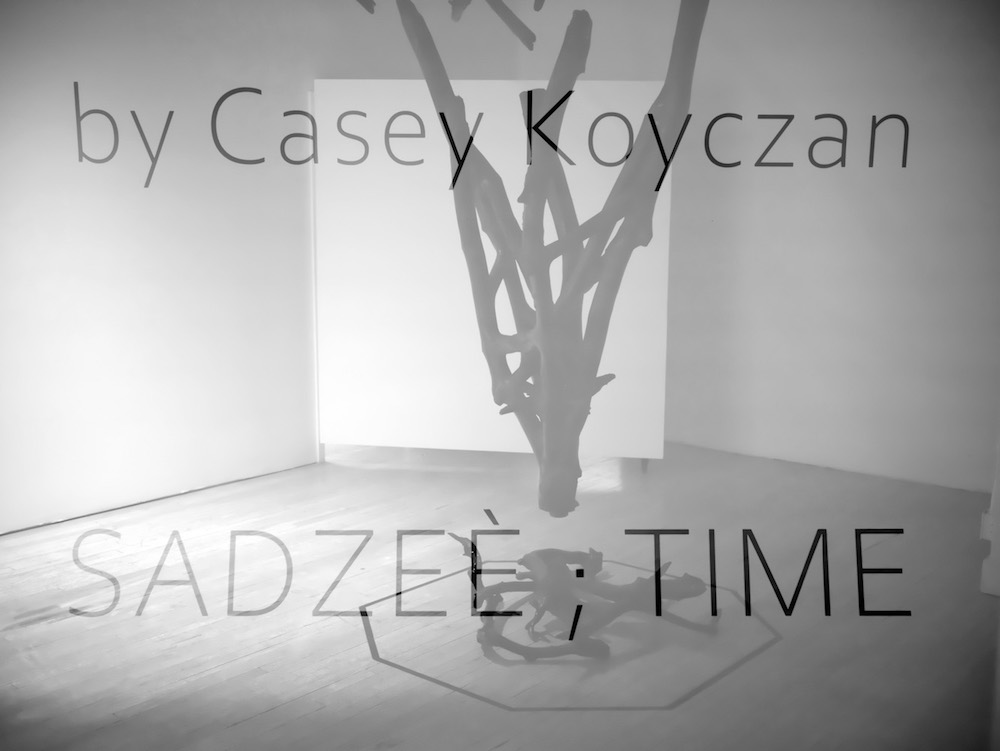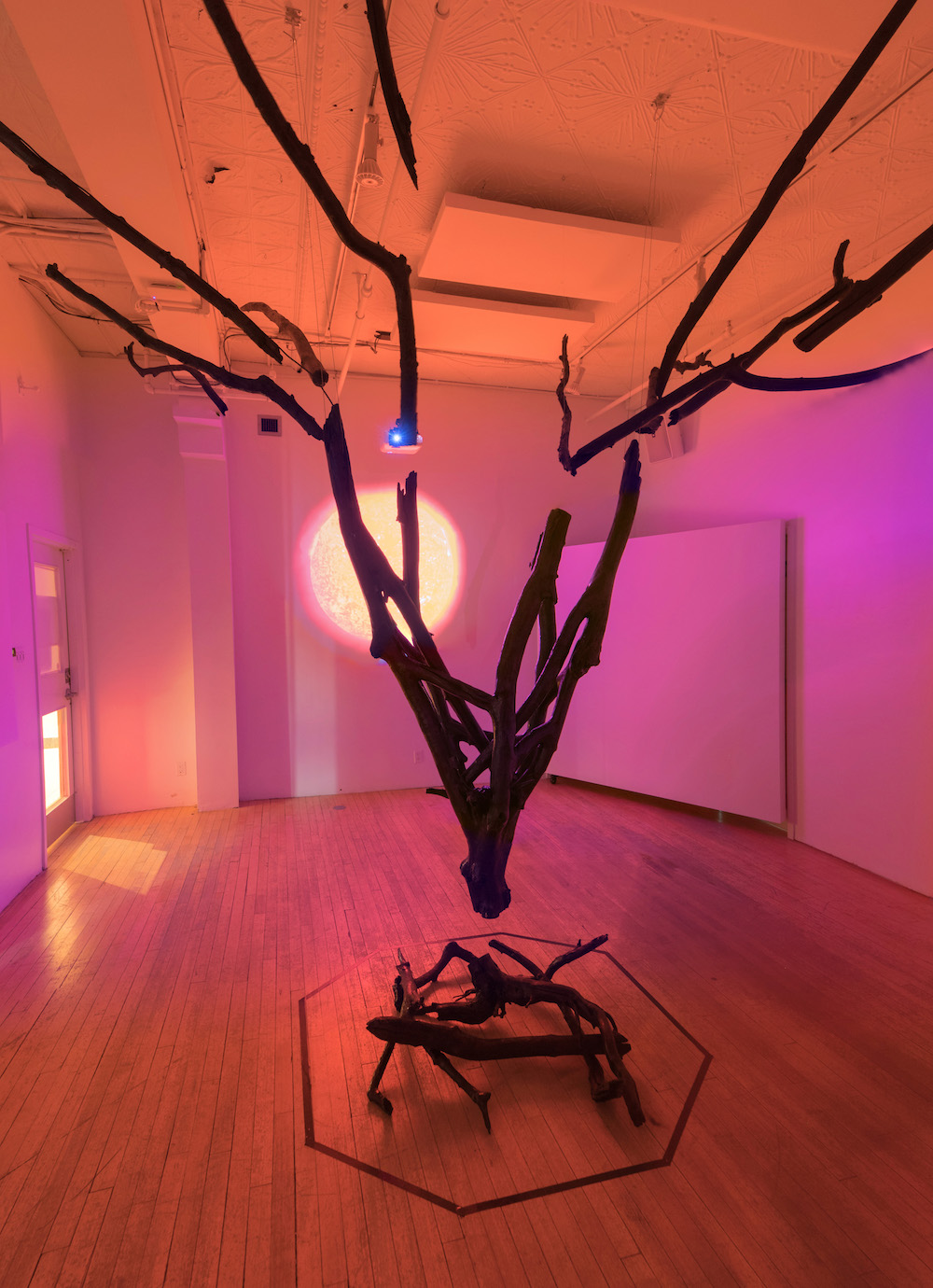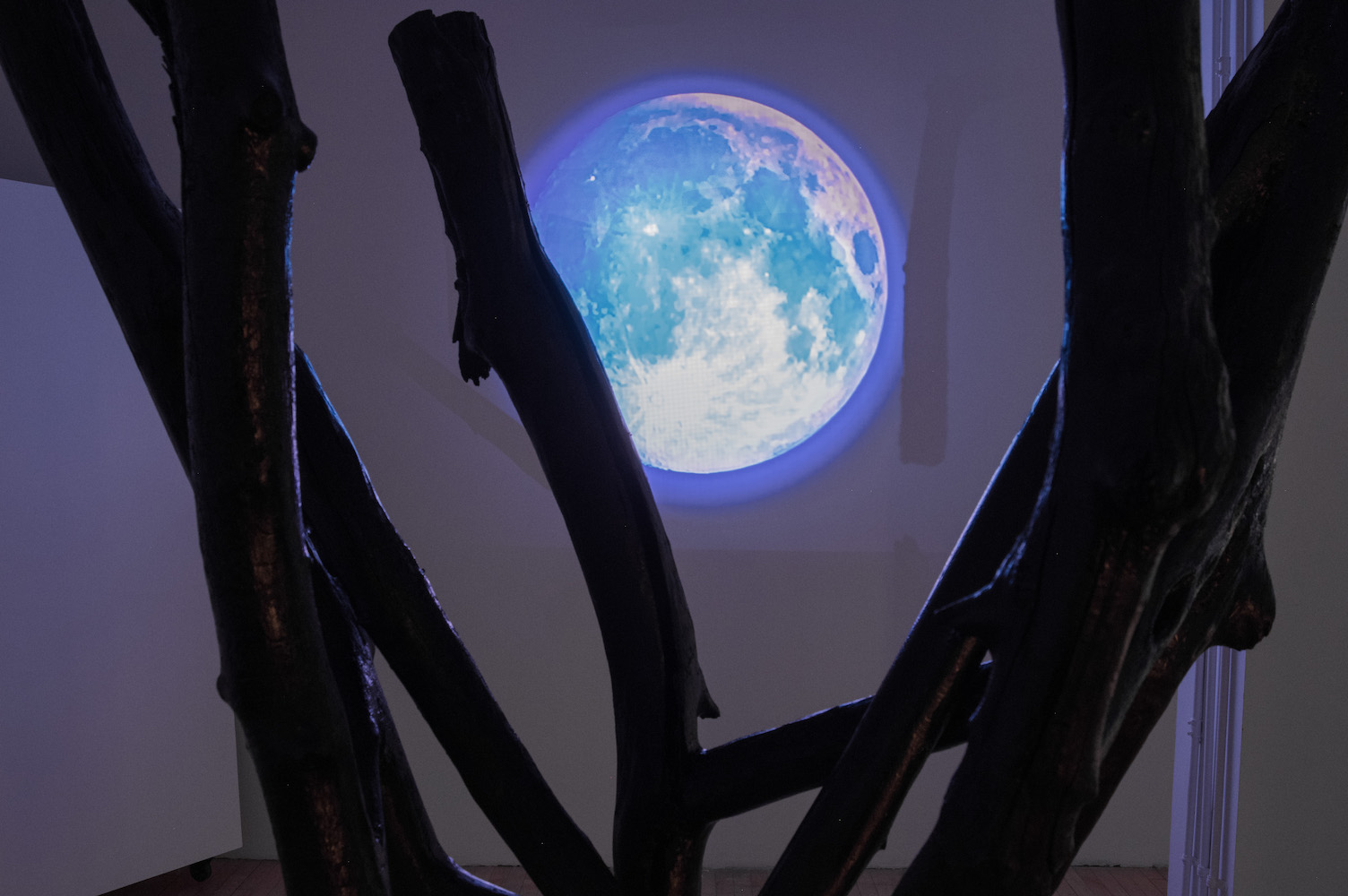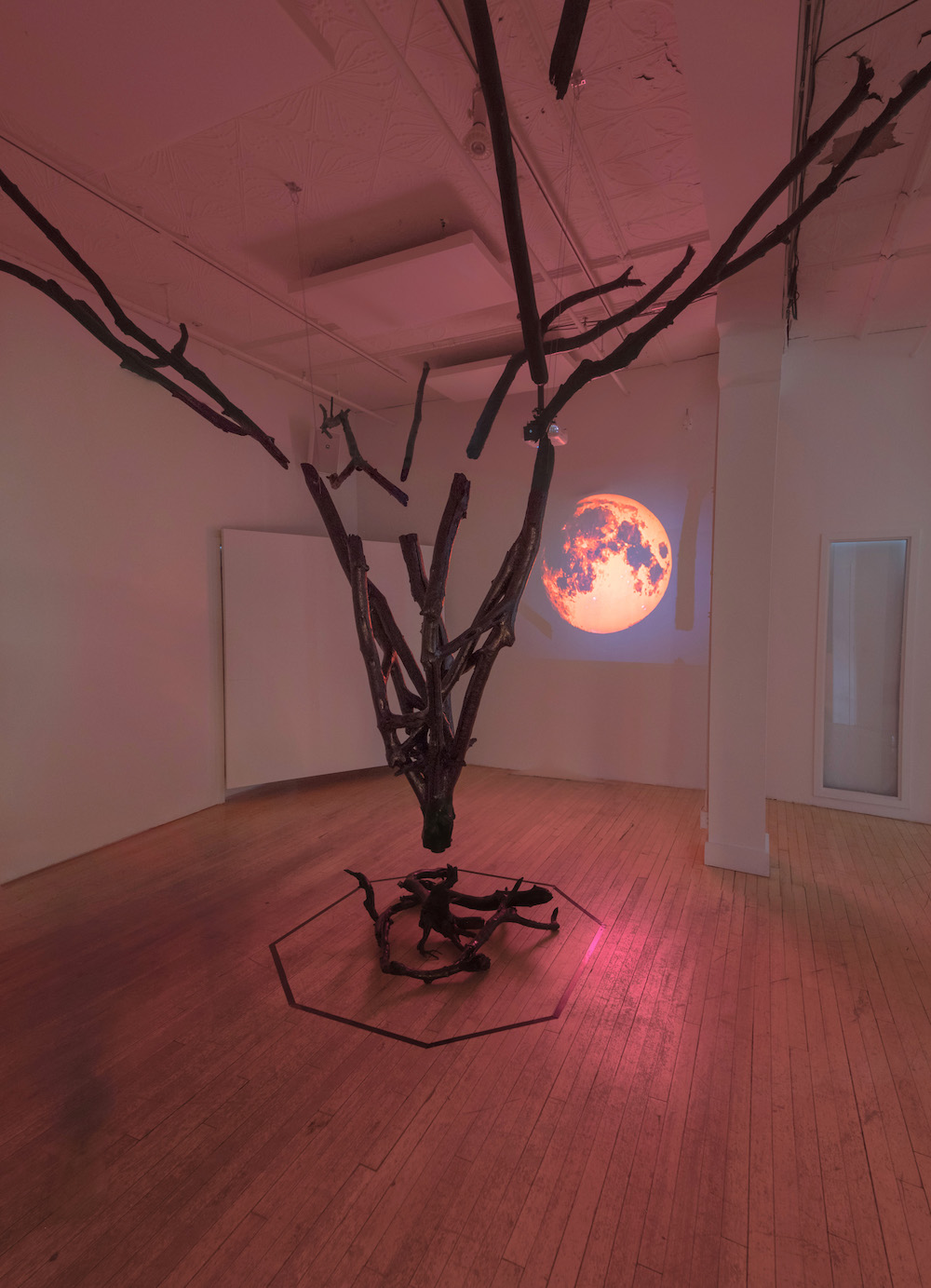Irene Bindi on SADZEÉ; TIME
Arboriform Umbras – by Irene Bindi [Photos by Robert Szkolnicki]
Casey Koyczan’s SADZEÉ ; TIME
Counterintuitively, interactive works will sometimes thwart engagement through their design; prescriptive pathways that lead to a too-singular goal force them to behave like bureaucratic offices, unimaginative and stifling in their result-orientation.
Such limited paths of engagement seem the antipode of SADZEÉ ; TIME, where the work’s behaviours rely on our nuanced presence, and within the subtleties of our attention we discover its expanse. Through a bit of knowledge of our own bodily work in relation to its surroundings, through attention to movement in ongoing relationship with resultant sensory changes, Casey Koyczan’s work feeds back to us, and we become aware of a delicate relationship. Focusing more intently on these movements and sensorial changes, we individually recede.
This delicious self-retraction while maintaining bodily presence is the balancing pleasure of SADZEÉ ; TIME. In using one’s audial perception, vision, a measured quickening and slowing of movements, stoppage—a reciprocity grows; we are suddenly not affecting but affected, experiencing what it is to be tonally muted, or what it is to move from being yourself a thunderous distortion to a quietude. You are a sound maker through sensory modes other than those you commonly use to make sound, and sound is making you.
The space between the black branches of SADZEÉ ; TIME’sarboriform core and the luminous moon and sun of its extremities remain unfixed. Walk in circles quickly, close to the radial trunk while focused on its black axis, and light from the sun and moon opposite resurface the branches and surrounding walls with shifting colour and light, creating previously absent umbras between. Through that same action, an aural pattern not strictly mirrored in our motion alone emerges instead in relationship to that motion’s interaction with surrounding forms.
You can shift from the sun, the moon, or fragmented central branch whose proximity to you/you to it, increase or decrease an array of intensities: of volume, luminance, saturation, pitch, and both visual and audial tone. All of these sensorialities go through scaling in relation to our movement and proximity to an energy locus which, also against intuition, is not one thing (the branch, your body), but the relation between these.
The metaphorical implications of this resonate powerfully in a moment when 1. proximity is everything, and 2. consciousness of the ability to perceive the fundamental relation of self to the rest is, on the broadest and most minute of measures, engaged in a crucial struggle for emergence. SADZEÉ ; TIME gently invites infinite relational possibilities, and treats an end as magnetically opaque.
Irene Bindi




